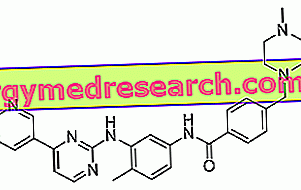
Characteristics of the medicinal product
Rapilysin comes in the form of a vial containing a white powder to be dissolved in a solution for injection.
Rapilysin contains the active substance reteplase.
Therapeutic indications
Rapilysin is used in patients who have had a heart attack (suspected acute myocardial infarction) to help dissolve blood clots (thrombolysis) that caused the heart attack. It is given within 12 hours after the infarction.
The medicine can only be obtained with a prescription.
Method of use
Rapilysin should be prescribed by doctors experienced in the use of medicines that act on the formation of clots. Treatment with Rapilysin should be started as soon as possible after the onset of heart attacks. Rapilysin is given as two injections 30 minutes apart, both intravenously (in a vein), slowly but within 2 minutes. Rapilysin is given together with other medicines that prevent the formation of clots (aspirin, heparin), to prevent blood clots from forming. However, Raplilysin and heparin should not be mixed in the same syringe, because the solution would become cloudy.
Mechanisms of action
Rapilysin is a thrombolytic (dissolves blood clots). The active ingredient of Rapilysin, the reteplase, is a copy of the natural enzyme, t-PA, but modified so that it has a faster and more lasting effect. It is produced with a method known as "recombinant DNA technology": that is, it is obtained from a bacterium in which a gene (DNA) has been introduced which makes it able to produce it.
Reteplase induces the production of an enzyme, plasmin, which degrades the clots. In myocardial infarction, clots have formed in the arteries that go to the heart. Rapilysin dissolves blood clots and helps restore normal blood flow to the heart.
Studies carried out
The efficacy of Rapilysin was evaluated in 4 studies with over 21, 000 patients. Rapilysin has been compared with other medicines used in thrombolysis: streptokinase (6, 000 patients) or alteplase (about 15, 000 patients). The studies examined the 35-day mortality rate after treatment (at 30 days in one study), heart failure and stroke.
Benefits found following the studies
Rapilysin was more effective than streptokinase in reducing the incidence of heart failure and equally effective in reducing mortality and has been shown to be as effective as alteplase in preventing death and stroke.
Associated risks
The main side effect of Rapilysin is bleeding (eg ecchymosis at the injection site). If bleeding occurs in the brain, it can cause a stroke with danger of death. Other less common side effects are chest pain, low blood pressure and difficulty breathing. For the full list of side effects reported with Rapilysin, yes
refers to the package leaflet.
Rapilysin should not be used in people who may be hypersensitive (allergic) to reteplase or to any other excipient, to people at risk of bleeding due to hypertension, previous bleeding, etc., to people with severe liver or kidney problems or to people who take oral anticoagulants. For the complete list of limitations, see the package leaflet.
Grounds for approval
The Committee for Medicinal Products for Human Use (CHMP) decided that Rapilysin's benefits are greater than its risks for patients requiring thrombolytic treatment of acute myocardial infarction and recommended that it be given marketing authorization (available of medical personnel) for the medicine.
Further information
On 9 November 2001 the European Commission granted a marketing authorization for Rapilysin. The marketing authorization holder is Roche Registration Limited.
For the full version of the EPAR for Rapilysin, click here.
Last update of this summary: February 2006



